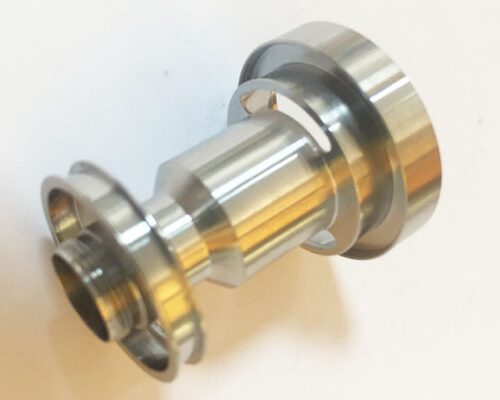Stainless steel is a corrosion-resistant alloy steel that is widely used in the medical, food processing, aerospace and automotive industries. CNC machining of stainless steel parts can provide high precision and consistency, but different models of stainless steel have different characteristics and challenges when machining. This article will explore the advantages and disadvantages of several common stainless steel models and their applications in CNC machining.
Stainless steel contains at least 10.5% chromium, which makes it excellent corrosion resistance in oxidizing environments. Different stainless steel models contain different alloying elements, such as nickel, molybdenum and titanium, which affect their performance and machinability.
Common stainless steel models and their characteristics:
304 stainless steel:
Advantages: Good corrosion resistance, non-magnetic, easy to weld and process, suitable for food processing and medical devices.
Disadvantages: Relative to 316 stainless steel, its corrosion resistance is limited and it is not suitable for extreme environments.
316 stainless steel:
Advantages: Better corrosion resistance than 304 stainless steel, especially in salt water, hydrogen sulfide and marine environments, suitable for more demanding applications.
Disadvantages: The work hardening rate is high, and higher cutting forces and more wear-resistant tools are required during the processing.
.
201 stainless steel:
Advantages: Low cost, suitable for applications in general corrosive environments.
Disadvantages: Corrosion resistance and machinability are not as good as 304 and 316 stainless steels, and are not suitable for high temperature or strong corrosive environments.
.
Advantages and disadvantages of stainless steel CNC machining:
Advantages:
High precision: CNC machining can produce complex parts with strict tolerances.
Consistency: CNC machining ensures the consistency and repeatability of parts.
Versatility: CNC machining is suitable for producing parts of various shapes and sizes.
Disadvantages:
Work hardening: Stainless steel is prone to work hardening during machining, increasing cutting forces and tool wear.
Thermal sensitivity: Stainless steel has poor thermal conductivity and is prone to heat generation during machining, requiring appropriate cooling measures.
Tool wear: The high strength and toughness of stainless steel can cause rapid wear of cutting tools.
Stainless steel CNC machining provides an effective way to produce high-precision and corrosion-resistant parts. Choosing the right stainless steel model requires considering the specific requirements of the project, including corrosion resistance, machinability, and cost. Through precise processing and strict quality control, stainless steel CNC machining can meet a variety of complex design and functional requirements.
Contact us:
Want to learn more about stainless steel CNC machining or consult custom machining services? Contact us now and our team of experts will provide you with professional technical support and solutions.

